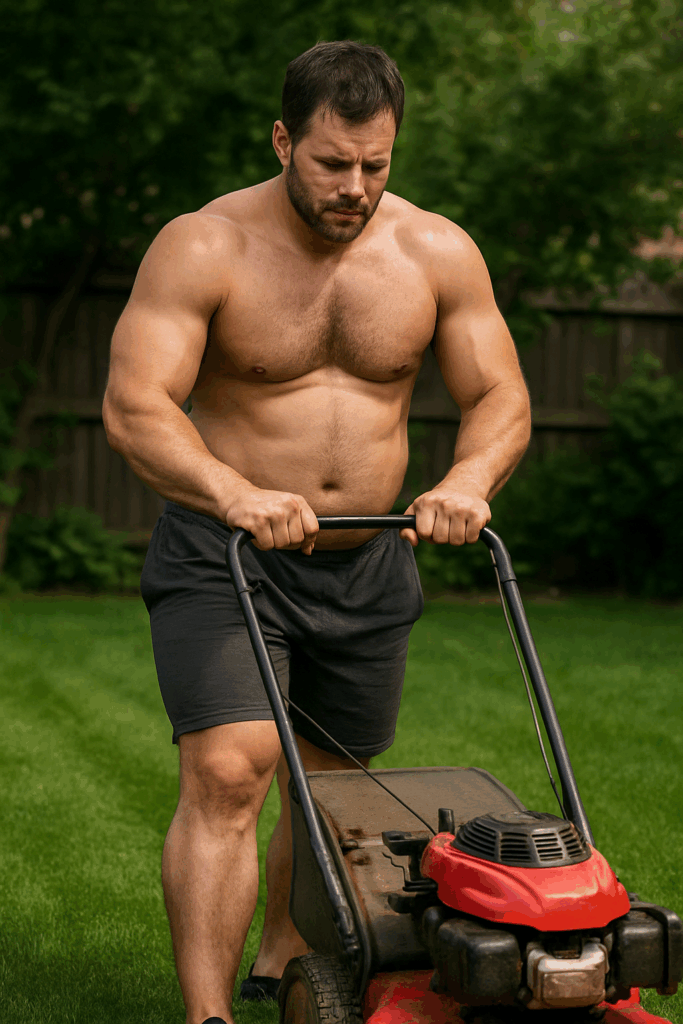Missing the Boat: TRT Without Growth Hormone Support
Executive Summary

TRT has become a go-to tool for athletes seeking to restore testosterone and recapture strength, recovery, and confidence. But focusing on testosterone alone misses the boat when it comes to a crucial part of the performance equation: growth hormone (GH). Low GH levels impair tendon resilience, recovery, and body composition. This leaves TRT athletes with powerful muscles, but connective tissues that lag behind — a mismatch that increases injury risk.
The bottom line: ignoring GH support while on TRT is a critical error that undermines long-term performance and resilience. Muscles may grow stronger and faster, but without GH-driven connective tissue adaptation, the “chassis” is left vulnerable. Among the options to raise GH, Ipamorelin stands out. Compared with older GH secretagogues or direct GH injections, it is more selective, produces fewer side effects, and better mimics natural GH release. For athletes already on TRT, integrating Ipamorelin or similar peptides creates a more balanced physiology: strong muscles supported by resilient connective tissue.
Table of Contents
Testosterone and Growth Hormone: Parallel Stories
Most athletes understand the consequences of low testosterone: loss of muscle and strength, sluggish recovery, fatigue, and reduced drive. Restoring testosterone reverses these problems, much like dropping a powerful new engine into a car.
But here’s where many make a mistake: they upgrade the engine while leaving the drivetrain stock. That’s what happens when GH remains low. Low GH levels lead to diminished recovery, accumulation of fat, and reduced vitality — but more importantly, GH is indispensable for tendons, ligaments, cartilage, and fascia. These tissues remodel and adapt through GH and its downstream mediator IGF-1.
Without GH support, TRT athletes risk building horsepower without upgrading the drivetrain — all torque, no stability. The engine (muscle) runs hot, but the drivetrain (tendons, ligaments, connective tissue) can’t keep up. That imbalance isn’t just inefficient; it’s dangerous.
Benefits of Adequate GH for Athletes
Tendon and Ligament Strength
GH stimulates collagen synthesis and tendon remodeling. Deficiency is linked to reduced tendon stiffness and cross-sectional area, increasing risk of rupture.¹
Faster Recovery
GH and IGF-1 accelerate repair of muscle and connective tissue. Studies show that restoring GH can shorten rehabilitation windows by 1–3 weeks in musculoskeletal injury models.²
Improved Body Composition
GH promotes lipolysis and preferentially reduces visceral fat, improving power-to-weight ratio and cardiovascular profile.³
Sleep and Nervous System Support
GH secretion peaks during slow-wave sleep. Adequate levels deepen sleep, sharpen cognition, and improve emotional resilience.
Synergy With Testosterone
Testosterone builds contractile muscle proteins; GH fortifies tendons, ligaments, and connective structures. Together they create both strength and structural resilience.
The Risks of Low GH in a TRT Athlete
When GH remains low despite restored testosterone, athletes may encounter:
- Slower recovery and persistent soreness
- Accumulating abdominal fat
- Reduced lean tissue gains
- Tendon fragility and higher rupture risk
- Premature aging of skin and connective tissues

In GH-deficient adults, research documents decreased tendon tensile strength, lower bone density, and impaired exercise capacity.⁴ For the TRT athlete, this means more muscle pulling on less resilient tendons — a recipe for injuries that halt progress.
Comparing Ipamorelin, Other Secretagogues, and GH Injections
| Compound | Selectivity / Hormonal Impact | Half-Life | Benefits for Athletes | Risks / Side Effects | Notes on Use |
| Ipamorelin | Highly selective for GH; minimal cortisol/prolactin | ~2 hours | Muscle recovery, fat loss, tendon support, improved sleep | Mild flushing/headache; low desensitization | Safest and most physiologic option; mimics natural GH pulses |
| GHRP-2 / GHRP-6 | Moderate GH release; increases cortisol/prolactin | 20–30 min | Muscle gain, appetite stimulation | Water retention, appetite spikes, prolactin issues | Older peptides; higher side-effect burden |
| Hexarelin | Potent GH release; strong prolactin/cortisol rise | ~70 min | Strong anabolic signal, bone support | Joint stiffness, prolactin-related gynecomastia, rapid desensitization | Powerful but poorly tolerated long term |
| GH Injections | Non-pulsatile, supraphysiologic exposure | Variable | Lean mass gains, fat loss, strong recovery | Edema, insulin resistance, carpal tunnel, organomegaly | Effective but highest side-effect and detection risk |
The table highlights why Ipamorelin is often considered the lowest-risk, most physiologic tool to address GH deficiency in athletes — particularly compared with older GHRPs or exogenous GH.
Integrating Ipamorelin With TRT
The literature and clinical use suggest several strategies for athletes on TRT:
- Mimic natural pulses: Administer Ipamorelin in the evening or pre-sleep to align with endogenous GH rhythms and improve recovery.
- Pair with GHRH analogs: Combining Ipamorelin with CJC-1295 (DAC) provides both sustained and pulsed GH stimulation.
- Avoid excessive dosing: Physiologic doses reduce risks of insulin resistance or fluid retention while providing robust benefits.
- Leverage lifestyle factors: Quality sleep, progressive resistance training, and nutrition enhance GH action and reduce the need for aggressive peptide use.
Examples of commonly reported research protocols include:
- 100–200 mcg Ipamorelin in the morning (fasted) and again before sleep, often used in 8–12 week cycles followed by 2–4 weeks off.
- 200–300 mcg once daily in the evening, particularly when paired with CJC-1295 (DAC) for sustained GH support, also in 8–12 week cycles with short breaks.
For the TRT athlete, this approach balances testosterone-driven muscle gains with GH-mediated tendon resilience, producing a safer and more sustainable performance profile.
Conclusion

Caption: Test and GH Dialed in!
TRT alone restores muscle, energy, and drive — but it does not address the weakness of connective tissue under low GH. The evidence shows that GH deficiency weakens tendons and slows recovery, raising injury risks when testosterone accelerates muscle growth.
Ipamorelin stands out as a selective, well-tolerated option that mimics natural GH pulses, with fewer risks than older peptides or direct GH injections. For TRT athletes, integrating Ipamorelin provides not just more performance, but a stronger foundation — ensuring the drivetrain can handle the horsepower.
References
- Hansen M, Kjaer M. Influence of sex and estrogen on musculotendinous protein turnover at rest and after exercise in humans. Scand J Med Sci Sports. 2014;24(1):3-20.
- Doessing S, Heinemeier KM, Holm L, et al. Growth hormone stimulates collagen synthesis in human tendon and skeletal muscle without affecting myofibrillar protein synthesis. J Physiol. 2010;588(Pt 2):341-351.
- Johannsson G, Svensson J, Bengtsson B-A. Growth hormone and body composition in adults with growth hormone deficiency. Endocr Rev. 2005;26(3):295-336.
- Cuneo RC, Salomon F, Wiles CM, Hesp R, Sonksen PH. Skeletal muscle and connective tissue effects of growth hormone in adults. Endocr Rev. 1992;13(2):135-151.
- Raun K, Hansen BS, Johansen NL, et al. Ipamorelin, the first selective growth hormone secretagogue. Eur J Endocrinol. 1998;139(5):552-561.
- Ghigo E, Arvat E, Gianotti L, et al. Growth hormone-releasing peptides. Eur J Endocrinol. 1997;136(5):445-460.
- Liu H, Bravata DM, Olkin I, et al. Systematic review: the safety and efficacy of growth hormone in the healthy elderly. Ann Intern Med. 2007;146(2):104-115.